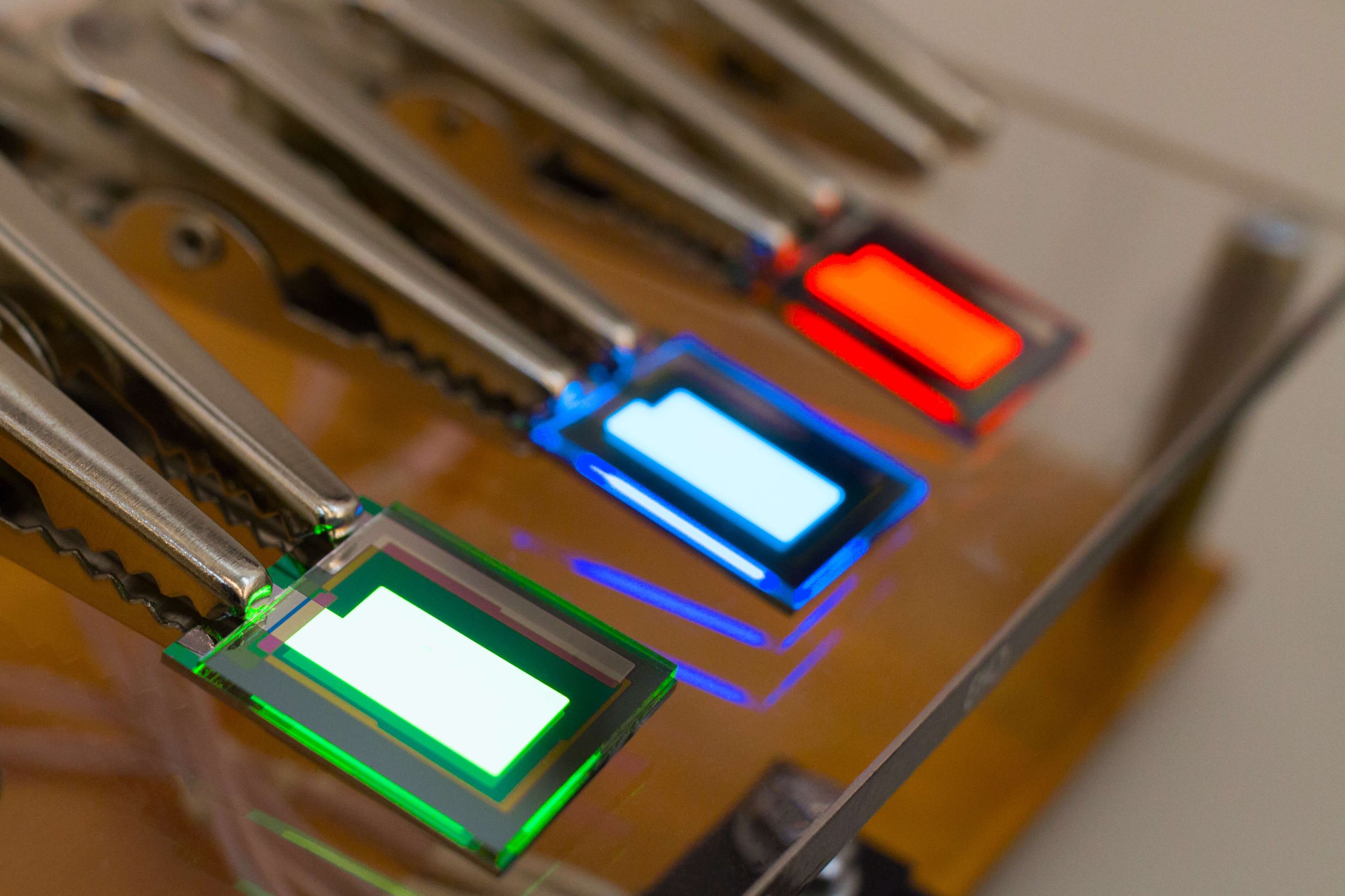
Thin Film Photovoltaics & Photodetectors
We support the Research and Development of Solar Cells and Photodetectors made of Quantum-dots, Organics, and Perovskites. You can simulate and characterize OPVs, perovskite PVs or perovskite-Si tandem PVs. The device stability can be estimated by following the ISOS protocols.
SALES SUPPORT
Email: info@fluxim.com
Software & General Enquiries: Tel.: +41 44 500 47 70
Hardware Enquiries Tel.: +41 44 500 47 74
Simulation and Design of Solar Cells
Use Setfos Absorption to model light absorption in thin-film photovoltaics. The interference pattern can be calculated to optimize all layer thicknesses and achieve maximum absorption in the device active layer.
Use Setfos Advanced Optics to optimize light propagation in a solar cell with scattering elements.
Use Setfos Drift-Diffusion to simulate the current-voltage (IV) characteristics, transient signals, and results obtained by impedance spectroscopy.
The simulation results help to understand the device physics and, thereby, improve the efficiency of organic, perovskite, and other thin-film solar cells.
Record efficiencies are normally achieved on small area devices of a few square millimeters. Scaling-up solar cells to larger areas is a challenge.
Use Laoss to model large-area solar cells and solar cell arrays. It can be used to optimize the metal grid electrode or to study the monolithic interconnection between solar cells in a photovoltaic array.
Electrical & Optical Characterization of Solar Cells
Paios performs a variety of measurements on thin-film solar cells, including IV, TPV, TPC, CELIV, impedance spectroscopy, capacitance-voltage, charge extraction. Everything is measured automatically. Several experimental techniques are designed especially for perovskite solar cells, such as voltage preconditioning and measurement of the IV-curve hysteresis.
Litos Lite can perform JV measurements on 56 parallel channels and stress the solar cells with either constant voltage, constant current, or at the MPP. The temperature of the samples can be controlled at room temperature under 1 sun with a cooling stage and increased to a maximum value of T = 150 °C. Different solar simulators are compatible with Litos lite.


Interested in our R&D Tools?
Contact us today for a Demo
QUESTIONS?
Email: info@fluxim.com Tel.: +41 44 500 47 70





